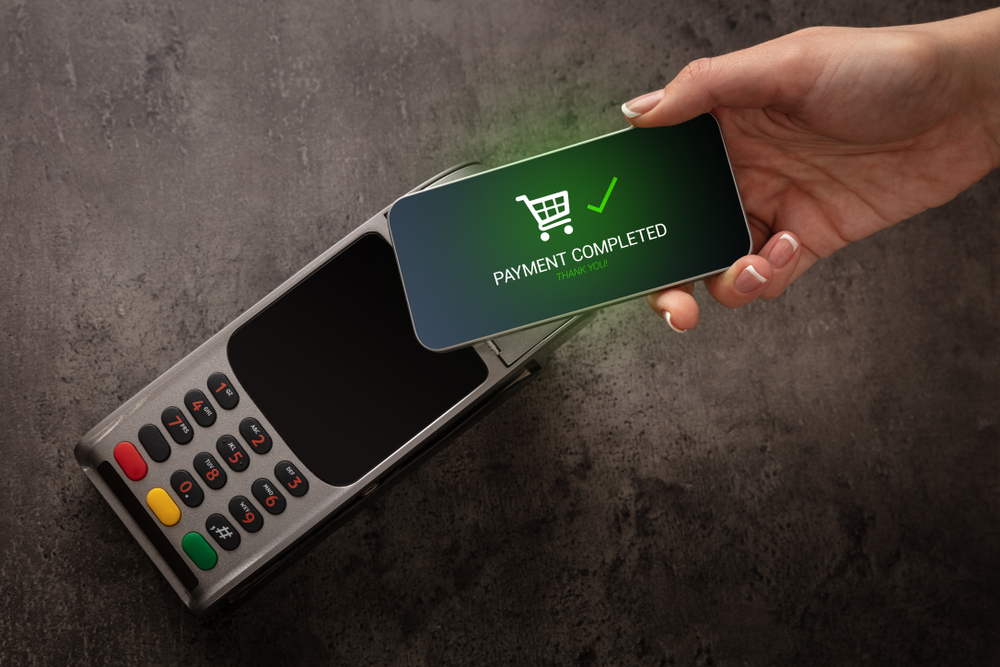.png?width=373&name=Eliminate%20(Facebook%20Post).png) To reduce costly shopping cart abandonment on their sites, merchants need to do two things: create a proven reduction strategy and make it a top priority.
To reduce costly shopping cart abandonment on their sites, merchants need to do two things: create a proven reduction strategy and make it a top priority.
There are many things that have contributed to the online shopping boom and the rise of eCommerce we’ve experienced lately. But, despite these significant increases in both online shopping and sales, shopping cart abandonment remains at a staggering level.
This dilemma is prompting researchers to examine what causes consumers to walk away before buying the products it seemed like they wanted.
Shopping cart abandonment is actually on the rise
Recent cart abandonment rates average 84.27% according to a report by CloudFront.
It's easy for E-commerce store owners to view shopping cart abandonment as just part of doing business. It's a very expensive part of doing business. In fact, studies have shown that up to four TRILLION dollars worth of merchandise will be abandoned this year. Ecommerce merchants lose out on $18 Billion in revenue because of shopping cart abandonment. With these kinds of numbers, eMerchants must make creating an abandonment reduction strategy a priority.
The reasons customers leave their contents in a cart without completing the purchase vary. And, it seems, may have nothing to do with customers changing their minds. Reasons include everything from unexpected costs, such as high shipping charges, to payment security concerns, or even wanting more payment options.
Many of these reasons are simply small mistakes that are overlooked, or didn’t seem important, when setting up your site. But these mistakes could end up costing you 35% of your sales! What would you do to increase your sales by 35%?
The majority of people who are deciding NOT to purchase from you are leaving your site and their cart for reasons that are totally solvable. Why wouldn't you want to address the things that contribute to it if you can? Any reduction in abandonment translates to an increase in conversions, right?
Why do your customers commit shopping cart abandonment?

To begin, it's important to understand why your customers are walking away in the first place. Once you know the “why,” you can begin to alleviate the issue.
There are many reasons customers walk away from an active shopping session. Customers aren't standing in the store with a mission. They’re at home, at work, on the subway. It's very easy to get distracted. These types of reasons are simply just part of the nature of online shopping. And most of the time, it's not your fault.
But, unfortunately, there are many things that you and your website could actually be responsible for that cause a prospective buyer to walk away. Thankfully, the main reasons buyers end up walking away are things that you absolutely can to do something about.
Common reasons customers ditch their cart
The most common reasons people abandon their carts have to do with your website flow and your policies and procedures. Fortunately, you can tweak these things to reduce the friction that is causing your customers to think twice about purchasing from you.
A Baymard Institute study found that 60% of abandoned carts were because of shipping fees that were felt to be too high. The next three most common reasons for leaving the site without purchasing the items they wanted all relate to how the site is built.
- Customers don’t like being required to create an account.
- The checkout process was too complicated.
- There was no transparent calculation of total costs upfront before hitting the “buy” button.
The list goes on to continue to describe negative experiences that all pertain to the user experience.
- Mobile users leave if your site is not optimized for mobile.
- Customers leave if the site loads to slow or is sluggish.
- They get impatient and leave if the checkout process is too long and complicated.
All these issues come back to user experience specifically related to the way your site was set up. And all of them can be improved upon.
9 Keys to a proven shopping cart abandonment reduction strategy.
UX is everything.
As you’ve just learned, it’s imperative that your website is friendly to navigate. It seems simple, but you’d be surprised how many websites are set up in a way that is just not user-friendly!
Retailers must consider the smoothness of flow throughout the entire user experience. This includes how well your site integrates with whatever technology consumers may use to access it. Pay attention to how fast the site loads, but also how quickly each image loads. Make sure it is intuitive and easy to navigate. And be sure to make the most pertinent information readily available.
Overall, there are three guiding principles that merchant account specialists suggest for a welcoming website: Reduce fear, build trust and credibility, and reinforce benefits for purchasing.
When you’re operating an ecommerce site, it can become easy to think just in terms of sales instead of customers. You’re not seeing your customers face to face. You know what they say... “out of sight, out of mind”! But these sales are your customers, so you need to make sure you take steps to help them feel valued. And one way to do that is through attention to detail in user experience. In fact, at the end of the day, most of the following strategies all come down to UX.
Absolutely must be mobile-ready and optimized.
ECommerce merchants must focus on having a mobile-ready website. Mobile sales already account for almost half of all U.S. eCommerce sales, 45% in 2020. And eCommerce sales via mobile are expected to increase to $488 billion annually in the U.S. by 2024. In fact, mobile commerce will account for about $3.56 Trillion dollars globally in 2021.
Mobile shoppers interact with your business across many channels. Consumers who use mobile devices to do their shopping want an experience that is smooth and frictionless. They want compatibility that is fluid with the device they are using to access your goods. And they expect a seamless experience across all your mobile channels, website and social media.
When you break down eCommerce shopping cart abandonment by device, you find that mobile abandonment greatly outweighs computers. Mobile shopping cart abandonment occurs 80.79% of the time compared to 73.93% computer abandonment.
This is mostly due to small screens, and sites that aren't optimized for mobile. It’s difficult to navigate and customers overwhelmingly blame difficulty entering their personal information at the checkout for quitting.
Inform, inform, inform.
The biggest cause of shopping cart abandonment is the customer feeling unsure about the purchase. To put it simply, they’re not convinced they want to purchase. They’re not sure about the product, if it will fit, or how to return it. They aren't sure it's a secure site and that they can trust you with their sensitive information.
Each of these can be alleviated by arming the customer with the information they need to feel sure about their purpose.
Product descriptions
Be thoughtful when creating product descriptions. Clearly describe your products, including its uses and care and handling. Include customer reviews for each product, too. This not only helps them understand the item better, it will instill confidence in the purchase and lower incidence of returns. Product comparisons are a great way to enhance the product description. Comparisons help customers decide which product is more right for their needs.
Offer to save items for later.
(And then make sure you are “remarketing” to your customers.)
Something that most definitely should be almost automatic is the ability to save their shopping cart for later.
If a customer is not quite ready to buy, they’ll usually jump at the chance to save the item for later. They know they won't have to search for that particular item again and appreciate that it saves them time. And your “cart reminder” email puts it back in the forefront of their thoughts to come back when they are ready.
You may not have the sale immediately, but you just might get it eventually, and maybe more. Allowing your customers to come back to an ongoing purchase could not only save a sale, but may even end up with them adding another item before checking out.
Disclosure of Return and Refund Policies readily available.
80% of consumers polled said they won't make a purchase if the return process is "too complicated". Online purchases add an extra layer of insecurity over whether a product is right. Objections like what if I get it and I don't like it, it's just not right? But you can increase confidence with a fair, but customer-centric return and/or refund policy.
Write a strong customer satisfaction guarantee and display it prominently. Your main goal here is to create a sense of comfort and preempt any objections. When you have an ironclad money-back guarantee, you've greatly eliminated the perception of buyer’s remorse. And you've given your customers a sense of confidence to go ahead and try the product.
Bonus? This is also a proven way to reduce your chargeback ratios.
Instill trust and ensure site and data security.
Data security and credit card fraud are top of mind for consumers more than ever before. People are shopping online more than ever before, and there’s more fraud and scam sites than ever before.
It's imperative that eCommerce merchants focus on website security. But it's also important to instill that confidence in your customers. Make it easy for customers to trust you.
Protect yourself and your customers by making sure all of your equipment is PCI compliant and completing your annual PCI compliance questionnaire.
Security is first and foremost and comes before everything else. Because if your customers do not feel safe being on your site, or making a purchase through your site, they won't be purchasing from you.
One way to build trust is through the prominent display of trust signals and website security badges. Displaying Trust Signals and Security Seals such as BBB, Norton, and McAfee, to name a few, help build trust with your customers. These badges show people that your website meets all security requirements and is safe to buy from.
Customers will get all the way to checkout and abandon their purchase just because there's no security seal on the payments page. Also, include statements on your site or in your terms of service that customer security is a top priority. This will go a long way to help your customers feel more comfortable entering their personal and financial information.
Don’t Require Account Creation.
According to the survey above, being required to create an account is one of the primary reasons customers leave a site without purchasing. Of course, you want customers to create an account! There are many benefits for both parties. But we’re trying to reduce friction at the checkout!
Obviously, retailers should encourage customers to create an account, especially if saving items to a "wish list". Just don't make it a requirement. Give customers the option of a guest checkout during the buying process. You’re not going to sacrifice the valuable customer data, you just might have to wait for it a little longer. Generally speaking, returning customers will eventually create an account when they come back often. This scenario is much better than them leaving annoyed and never coming back.
Display Shipping Costs and Total Purchase Calculations early.
Unexpected costs and shipping charges are still the number one reasons consumers walk away from a purchase. One crucially important thing to keep in mind is while customers love the convenience of shopping online, they absolutely hate paying the extra cost for the item that shipping represents.
As we pointed out from the survey above, it is literally the single most prevalent reason for shopping cart abandonment. While you can't necessarily control shipping costs, you can remember to be fair and, most of all, transparent. Introduce estimated shipping costs early in the checkout process. Be sure to give estimated delivery times so that customers can know in advance roughly how long they will have to wait for the price they are paying to have their goods delivered.
Total purchase price is a serious point of contention that causes consumers to ditch the purchase. Aside from shipping costs, consumers are also frustrated when asked to enter payment information before they’ve been informed of the total price. It raises uncertainty whether they're willing to go through with the purchase. How much are the taxes? What about shipping? After all that, will it still seem like a good price or be too much?
It's easy to set up your shopping cart to calculate the total cost of the item, including tax and shipping, BEFORE purchase. The last place you want to cause friction is right before they hit the complete order button.
Keep the checkout flow flowing.
Checkout usability is another major reason for shopping cart abandonment. Creating a better checkout design and flow on your site can increase your conversions 35%. Give customers a clear indication of where they are in their checkout process to help flow. A progress bar shows them exactly where they are and what still needs to be done to complete the process.
Make sure checkout forms are easy and only ask for what is necessary. And your entire checkout process must be optimized for both computer and mobile use.
By streamlining the buying process, you increase your chances that the customer will follow through with the purchase. Once the purchase is complete, focus on creating a loyal customer that returns again and again.
Lastly, make it easy for customers to pay you!
The most important part is making sure your customers can pay you! When choosing a Payment Processing partner, make sure they can offer all the solutions you need.
Consumers are becoming more and more comfortable with multiple digital payment avenues. Let your customers choose how they want to pay you. Of course, you accept credit, debit, and PayPal. But do you accept gift cards and allow them to use a BNPL such as Klarna?
Buy-now-pay-later options have been experiencing a huge rise in popularity lately. This is largely due to younger Millennial’s and Gen Z's distrust and aversion to credit card debt. And when you're done considering all the alternative payment methods, it may be time to consider accepting alternative currencies like Bitcoin.
Offering multiple payment options shows that you’re making every effort to keep up with the latest technology for their convenience.
Conclusion
Online shopping is largely anonymous, but try to remember that these buyers are actually people. Treating them like people who are standing in front of you, buying from you, will go a long way in mitigating shopping cart abandonment, increase your sales, and help you gain happy return customers.
The main goal you’re striving for is to create a rewarding buying experience for your customers. Details matter to today’s consumers. And the competition online is unprecedented. You need to make sure you’re keeping up with, or even exceeding, the customer service that your competitors are offering.
Each strategy here is a very doable action that will help increase your sales and create happy customers that come back time and again.
MonerePay has robust solutions, affordable rates, and the world-class service your business deserves!
At MonerePay, we are committed to your success and take pride in helping our business partners reach their goals. Whether through providing the best service and most competitive rates or giving advice on how to be more successful in taking your business to the next level, we’re here for you.
Whether you're just getting started, or you simply need a better merchant account to accept credit cards, we're here to help. If you're looking for reliable, trustworthy, and reasonably priced payment-processing solutions, give MonerePay a call today. We not only offer the best rates, we work hard to provide you with top-notch service, so you can focus on other activities, such as generating revenue!

(1).jpg)



